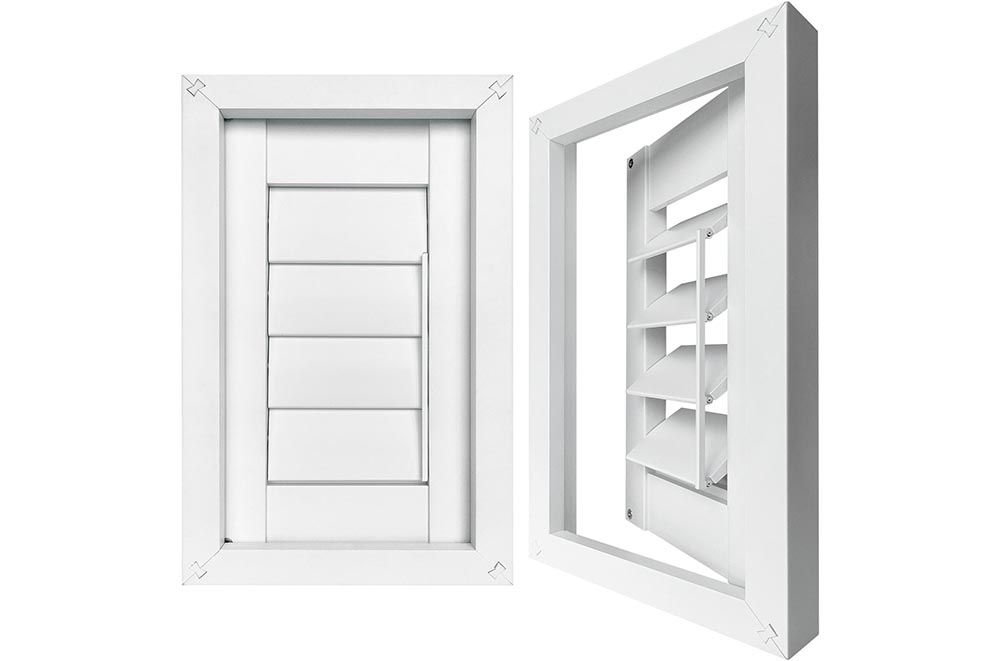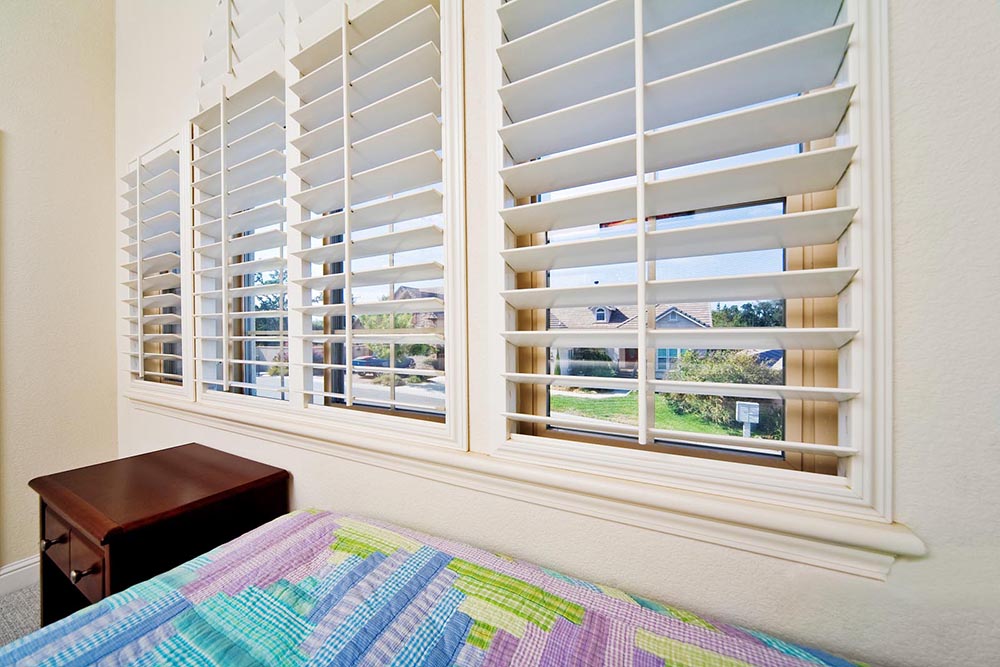PVC plantation shutters have become a popular choice for homeowners thanks to their durability, affordability, and low-maintenance appeal. However, many users still face confusion and challenges when choosing, installing, or maintaining them. If you’re one of those struggling to make the most of your PVC shutters, this blog is here to clear up the chaos with practical solutions.
Ⅰ. Confusions & Challenges in Selection: “Am I Picking the Right One?”
Common Headaches
• Size Mismatch: Many homeowners guess window dimensions or measure incorrectly, leading to shutters that are too big, too small, or ill-fitting.
• Quality Doubts: With so many PVC products on the market, it’s hard to tell if a shutter is durable enough to resist warping, yellowing, or cracking—especially in humid areas like bathrooms or kitchens.
• Style vs. Function: Choosing between slat sizes (e.g., 2.5-inch vs. 3.5-inch) or hinge types (hidden vs. visible) often leaves users wondering if they’re sacrificing practicality for aesthetics.
Solutions
• Measure Precisely: Use a steel tape measure (not a fabric one!) to measure the width and height of your window opening at three points (top, middle, bottom for width; left, center, right for height). Go with the smallest measurement to ensure a snug fit. For recessed windows, add 1–2 inches to the width/height if you want the shutter to overlap the frame (for better light control).
• Check Quality Markers: Look for PVC shutters labeled “UV-resistant” (prevents yellowing) and “moisture-proof” (safe for high-humidity spaces). Press the slats gently—they should feel rigid, not flimsy. Avoid shutters with visible seams or uneven coloring, as these are signs of poor manufacturing.
• Balance Style and Use:
1. Smaller slats (2.5-inch) work well for narrow windows or rooms where you want subtle light filtering (e.g., bedrooms).
2. Larger slats (3.5-inch) let in more light and are easier to clean—great for living rooms or kitchens.
3. Hidden hinges give a sleek, modern look, while visible hinges are sturdier for heavy shutters.
Ⅱ. Installation Troubles: “Why Won‘t It Stay Straight?”
Common Headaches
• Misaligned Panels: DIY installers often struggle to get multiple shutter panels to hang evenly, leading to gaps or uneven spacing.
• Loose Mounts: Shutters that sag or rattle after installation—usually because screws were driven into drywall instead of studs.
• Tricky Window Types: Bay windows, arched windows, or windows with crank handles make standard shutter installation feel impossible.
Solutions
• Mark First, Drill Later: Use a level to draw a straight guideline on the window frame where the shutter hinges will go. For multiple panels, measure the distance between each panel’s edges to ensure equal spacing (e.g., if your window is 48 inches wide and you have two 24-inch panels, center them with 0.5-inch gaps on each side).
• Anchor Securely: Locate wall studs using a stud finder—screwing hinges into studs (not just drywall) ensures long-term stability. If studs aren’t available, use heavy-duty drywall anchors rated for at least 10 pounds per anchor (most PVC shutters weigh 5–15 pounds per panel).
• Customize for Odd Windows:
1. Bay windows: Opt for “L-shaped“ shutter panels designed to follow the window’s angle, or use a shutter frame that adapts to the bay’s curve.
2. Arched windows: Choose top-arch PVC shutters (many manufacturers cut them to match your arch’s radius) or install a flat shutter at the bottom and a stationary arched panel at the top.
3. Crank windows: Leave a 2–3 inch gap between the shutter and the crank, or use “offset hinges” to shift the shutter away from the handle.
Ⅲ. Maintenance Frustrations: “How Do I Keep It Looking New?”
Common Headaches
• Sticky Slats: Dust and grime build up in the slat hinges, making it hard to open or close them smoothly.
• Yellowing or Staining: PVC shutters in sunny areas often turn yellow over time, and kitchen shutters can pick up grease stains.
• Warping in Humidity: Bath or shower window shutters may warp or develop mold if not cared for properly.
Solutions
• Clean Regularly (the Easy Way):
1. For dust: Use a microfiber duster or a vacuum with a brush attachment to clean slats—avoid feather dusters, which just spread dust.
2. For grime: Wipe slats with a damp cloth (not soaking wet!) dipped in warm water and mild dish soap. For tight hinges, use a cotton swab to remove buildup.
3. Avoid harsh cleaners (bleach, ammonia, or abrasive sponges)—they’ll damage the PVC finish.
• Prevent Yellowing: Wipe sunny shutters monthly with a cloth dampened with vinegar and water (1:1 ratio)—the vinegar helps break down UV damage. For extra protection, apply a thin coat of PVC conditioner (available at home improvement stores) once a year.
• Fight Humidity: After showers, open the bathroom window or run an exhaust fan to reduce moisture. If mold appears, clean it with a mixture of warm water and baking soda (scrub gently with a soft brush)—never use bleach, as it can discolor the shutter.
Ⅳ. Functionality Woes: “Why Isn‘t It Blocking Light/Noise?”
Common Headaches
• Light Leaks: Gaps around the shutter edges or between slats let in unwanted sunlight (annoying for bedrooms!).
• Poor Soundproofing: PVC shutters are supposed to muffle outside noise, but some users still hear traffic or neighbors.
Solutions
• Seal Light Leaks:
1. Add weatherstripping tape (foam or rubber) around the edges of the shutter frame—this fills gaps between the shutter and window.
2. For slat gaps: Ensure slats are fully closed (twist the tilt rod until slats lie flat against each other). If slats are warped, replace them with new PVC slats (most manufacturers sell replacement parts).
• Boost Soundproofing: Install “insulated PVC shutters” (they have a foam core that absorbs noise) or add a layer of acoustic caulk around the shutter frame to seal air gaps. For extra effect, hang heavy curtains over the shutters—combined, they’ll block more noise than either alone.
PVC plantation shutters are a fantastic investment for any home—when you know how to choose, install, and care for them. By addressing these common confusions and challenges with the solutions above, you’ll enjoy shutters that look great, function well, and last for years.
Post time: Sep-08-2025

